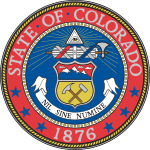| |||||||||||||||||||||
| |||||||||||||||||||||
 Results by county Phipps: 40–50% 50–60% 60–70% Adams: 40–50% 50–60% 60–70% | |||||||||||||||||||||
| |||||||||||||||||||||
| Elections in Colorado |
|---|
 |
The 1924 United States Senate election in Colorado took place on November 4, 1924. Republican Senator Lawrence C. Phipps ran for re-election to a second term. Senator Alva B. Adams, who held the other Senate seat, opted not to run for re-election in the special election, and instead decided to challenge Phipps for re-election. Adams's gambit turned out to be unsuccessful, as he lost to Phipps by roughly the same margin as Democrats lost the special election.


